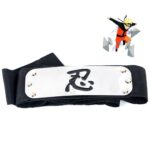An annular tear is when the cartilage on your knee has become damaged. It can occur at any age, but it’s most common in people between 30-50 years old. Women are more likely to experience this type of injury than men. The pain that comes with an annular tear usually lasts for about a month. You may also experience swelling, bruising, and stiffness after the injury.
An annular tear can take anywhere between 18 months and two years to heal on its own since the annulus fibrosus has such a little blood supply (which is required for the body to mend itself). Most https://drtonymork.com/back-pain/annular-tear/annular-tears/ medical professionals will begin therapy with a cautious strategy, administering anti-inflammatory drugs to reduce pressure and sometimes steroid injections to lessen discomfort.
If you’ve suffered from an annular tear, there are ways you can relieve some of your symptoms by using physical therapy and exercises.
What Is an Annular Tear?
An annular tear occurs when the cartilage on your knee becomes damaged, which allows the joint to rub together. This friction causes the cartilage to break down, causing inflammation. When this happens, bones rub against each other, creating painful symptoms.
The type of damage depends on the severity of the injury. If the cartilage is torn but is not broken, it will heal over time. However, if the cartilage is pulled or rubbed apart, it won’t be able to repair itself and cause permanent damage. If this happens, you may need surgery.
Causes of Annular Tears
There are several reasons why someone could suffer from an annular tear. Sometimes, you can injure yourself during sports activities. In fact, one study found that up to 80 percent of athletes had an acute traumatic knee injury. Other times, you may have arthritis in your knee. This condition can make the cartilage wear out and thin, making it more susceptible to tearing. Also, if you’re overweight, you’ll put extra pressure on your knees, increasing the risk of tearing them.

Symptoms of An Annular Tear
After suffering from an annular tear, you might notice a lot of pain and discomfort. You may feel as though the knee isn’t functioning properly, and you may find it difficult to walk without limping. Your knee may be stiff and swollen, and you may even have difficulty sleeping because of the pain.
It’s important to see your doctor if you have these symptoms. They may be signs of a serious problem that requires immediate medical attention. In addition, they can be caused by other problems such as bursitis, ligament tears, or osteoarthritis.
When Should I See My Doctor About an Annular Tear?
If you think you may have experienced an annular tear, make sure you visit your physician right away. They’ll examine your knee, asking questions about what happened. They’ll also ask about your symptoms and how long you’ve been dealing with them. While many people recover quickly from an annular tear, some patients require surgery.
During your initial visit, your doctor will likely take x-rays to determine whether you have arthritis. If so, they may suggest medications to help manage the pain. If you don’t have arthritis, your doctor may recommend anti-inflammatory drugs or injections. These treatments can help reduce pain and swelling.
If your doctor determines the extent of the injury, he or she may prescribe rest and physical therapy. Physical therapy is a great way to treat an annular tear because it helps restore muscle strength to the injured area. It also gives you a chance to learn new exercises that can prevent future injuries.
Types of Physical Therapy and Exercises to Treat an Annular Tear
You can do physical therapy and exercises at home to relieve your symptoms. Here are some examples of exercises that may help treat an annular tear:
– Walking – Walking is helpful both for preventing further damage and improving your mobility. If walking isn’t possible, try cycling or swimming.
– Stretching – Stretching is another effective way to keep your muscles flexible. Perform the following stretches:
* Standing lunge stretch – Stand straight with your feet shoulder width apart. Step forward with your left foot and bend both legs until you reach 90 degrees. Hold for 15 seconds. Switch sides and repeat three times.
* Side leg raise – Lie face-up on your side. Lift your right leg off the floor and hold for 15 seconds. Repeat this exercise three times.
* Sitting hamstring stretch – Sit upright in a chair with your back supported. Stretch your hamstrings by lifting your heel toward your buttocks. Keep your leg straight and flex your toes to maintain balance. Hold for 20 seconds. Switch sides and repeat three times.
* Seated hip extension – Sit in a chair with your back supported. Extend your right leg behind you. Reach around and grasp your foot with your hands. Pull your thigh backward and hold for 15 seconds. Try to bring your leg up to your waist. Switch sides and repeat three times.
* Single-leg squat – Stand facing a wall. Place your hands on the wall for support. Slowly lower your body into a deep squat position with your right leg. Hold for 5 seconds and return to standing. Complete 10 repetitions on the right side followed by 10 reps on the left.
These exercises can also help you regain strength and improve your flexibility. Although you should always consult your physician before starting any new exercise program, these movements can help you get back on your feet faster.
To prevent reinjury, it’s important to know when to stop exercising. If you’re doing too much, you run the risk of aggravating your injury rather than healing it.
In general, the sooner you start rehabilitating your knee, the better. Most doctors recommend beginning treatment within four weeks of experiencing the injury.

How Long Does Rehabilitation Take?
Once you begin treatment, you’ll want to follow your doctor’s advice closely. Depending on the severity of your injury, you may need to continue physical therapy for months or even years. There are a few factors that can affect your recovery time. For instance, if you have arthritis, you’ll have a longer recovery period.
Age also plays a role in your rehabilitation. Children tend to recover faster than adults, but they still need to do physical therapy. Adults can expect to spend anywhere from six months to two years recovering from an annular tear.
How Often Do I Need Physical Therapy?
Because every person heals differently, you’ll want to check with your doctor regularly to ensure you’re progressing towards full recovery. He or she will decide how often you should come in for physical therapy based on the results of your tests.
For example, if you are having trouble walking, your doctor may increase the frequency of your visits. Similarly, if you’re experiencing pain while performing certain movements, your doctor may increase the number of sessions. You may need to see your doctor multiple times per week for several weeks. Afterward, you may only need to go once every two to three weeks.
Once you finish, it’s important to remember to give your knee some time to rest. Be patient and allow it to heal completely. Don’t push yourself to perform strenuous physical activity right away. Doing so can slow down your healing process. Instead, focus on staying active with light exercise and stretching.
Although it takes time to fully recover from an annular tear, you can significantly decrease the amount of pain and discomfort you feel. By incorporating physical therapy and exercises into your daily routine, you can achieve complete freedom from pain and enjoy a healthy lifestyle.










